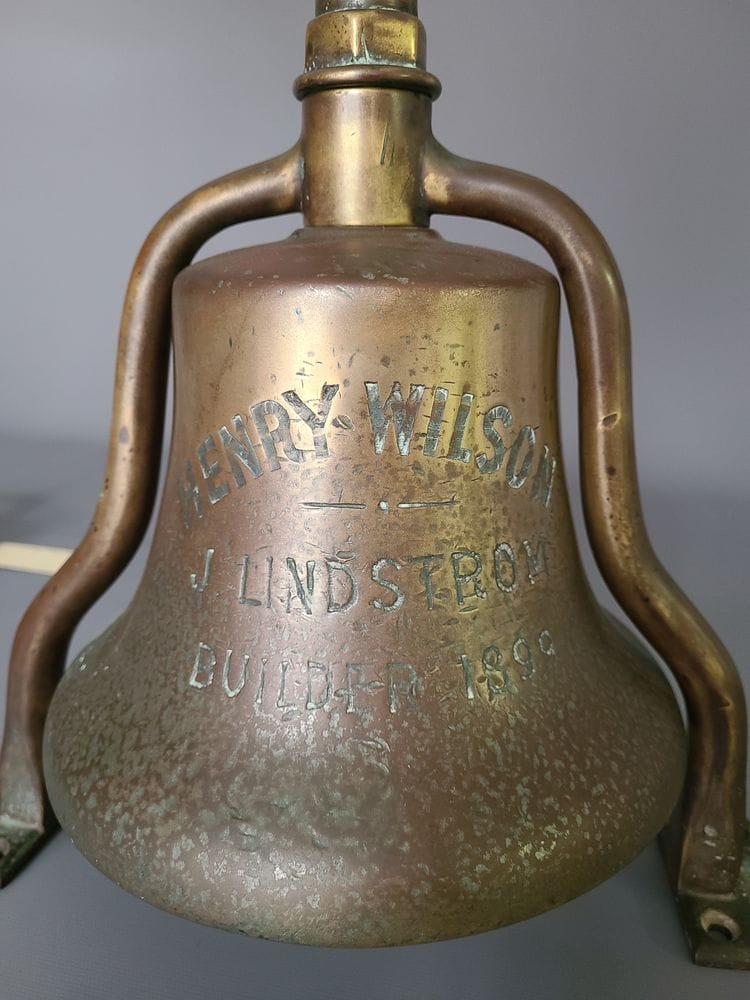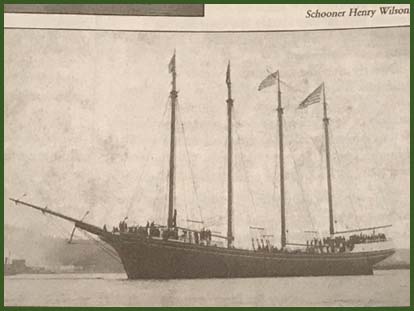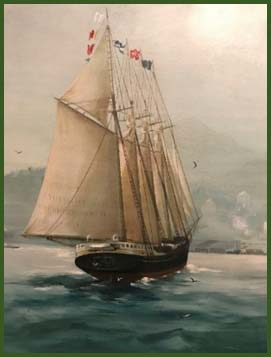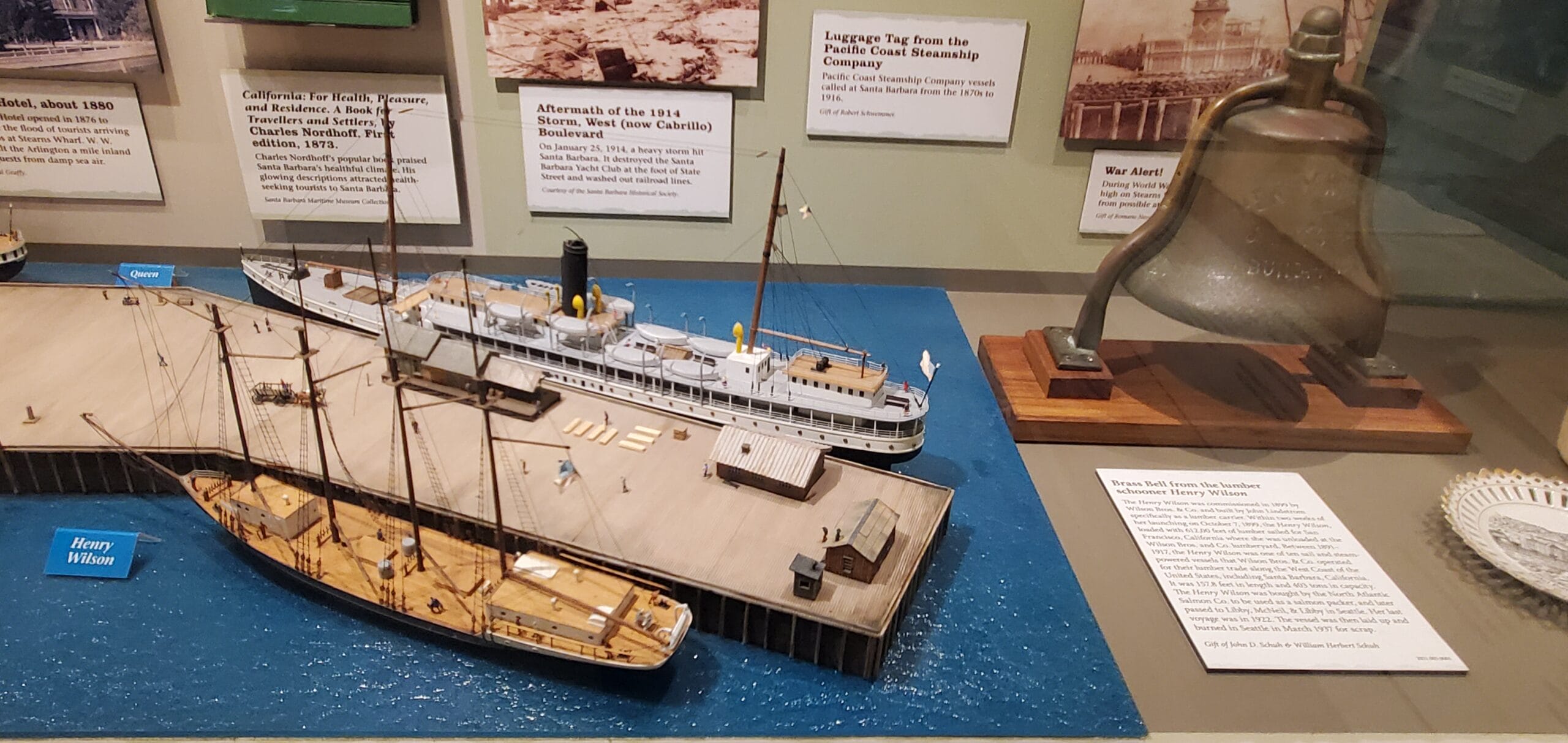CURATOR’S LOG: Ships’ Bells & The Long Journey of the Henry Wilson’s Bell
By Rita Serotkin

One of the newest artifacts in SBMM’s collection is a ship’s bell with a long and distinguished history. According to Wikipedia, “A ship’s bell is a bell on a ship that is used for the indication of time as well as other traditional functions. The bell itself is usually made of brass or bronze, and normally has the ship’s name engraved or cast on it.” In some cases, as with the Henry Wilson bell, the name of the shipyard and the launch date are also engraved on its surface. Traditionally, if a boat’s name is changed, the bell carrying the original name remains on board, and in the event of a shipwreck, the bell may be the only way to positively identify the boat.
Traditions & Uses of Ship’s Bells
First and foremost, a ship’s bell was used for telling time as measured in 30-minute intervals by an hour glass or clock and for marking the beginning and end of 4-hour crew watches. A sailor’s watch would end when the clock reached eight bells. Ship’s bells were also used for safety in foggy or low-visibility conditions, to herald important guests to the boat, and to honor the death of a sailor. On New Year’s Eve, 16 bells were traditionally struck at midnight — eight for the old year and eight for the new year.
Shown below is a table shows how the ship’s bell time-keeping system worked:
| Number of bells | Hour (a.m. & p.m. | ||
| One bell | 12:30 | 4:30 | 8:30 |
| Two bells | 1:00 | 5:00 | 9:00 |
| Three bells | 1:30 | 5:30 | 9:30 |
| Four bells | 2:00 | 6:00 | 10:00 |
| Five bells | 2:30 | 6:30 | 10:30 |
| Six bells | 3:00 | 7:00 | 11:00 |
| Seven bells | 3:30 | 7:30 | 11:30 |
| Eight bells | 4:00 | 8:00 | 12:00 |
About the Schooner Henry Wilson
Henry Wilson was commissioned by the Wilson Bros. & Co. lumberyard, built in 1899 by John Lindstrom, a shipbuilder in Aberdeen, Washington, and launched on October 7, 1899. She was 157.8 feet in length and 403 tons in capacity. As seen below, the boat was a single-decked, four-masted schooner that was designed specifically to haul lumber up and down the West Coast. In fact, within two weeks of being launched, the boat was loaded and delivered 612,000 feet of lumber to San Francisco, California.
According to Chuck Wilson, “Between the period of 1891-1917, the Henry Wilson was one of ten sail and steam-powered vessels that Wilson Bros. & Co. operated for their lumber trade along the West Coast of the United States, including Santa Barbara.” The Henry Wilson was then sold to the North Atlantic Salmon Co. for use as a salmon packer and was then sold again to join the salmon fleet of Libby, McNeil, & Libby in Seattle, making her last voyage in 1922 Sadly the boat was burned in Seattle in March 1937. Images of the Henry Wilson:


How the Bell Found Its Way to the Santa Barbara Maritime Museum
How the bell found its way back to the Wilson family, Santa Barbara, and the Santa Barbara Maritime Museum is a fascinating story that involves Chuck Wilson, a member of the museum’s Board of Directors and of the Wilson family. As Chuck outlined the bell’s voyage, “In March of 2017, John Schuh of Portland, Oregon, reached out to my cousin, Emily M. Wilson of Seattle, Washington, regarding a ship’s bell that his family had at their home for many years.” That bell turned out to be the one that belonged to the Henry Wilson and Mr. Schuhwas able to locate Ms. Wilson since she had written a book in 2007 about her family and their companies on the Pacific Coast. According to Chuck Wilson, “Mr. Schuh felt the ship’s bell should be displayed in a historical setting and in a meaningful manner, such as a museum. He said his father had purchased the bell at an auction in the 1940s or 1950s.”

As a result, he continued, “On May 17, 2021, my wife Mary and I picked up the Henry Wilson ship’s bell from the home of John and Susan Schuh in Durham, Oregon.” Generously donated to the museum by John D.Schuh, his father William Herbert Schuh and, Deborah Hang, the bell has come home to Santa Barbara after 104 years and is now on display in the museum’s historic waterfront exhibit. Ironically, that display case already included a model of the Henry Wilson tied up at Stearns Wharf (left foreground), reuniting the boat and its bell!

